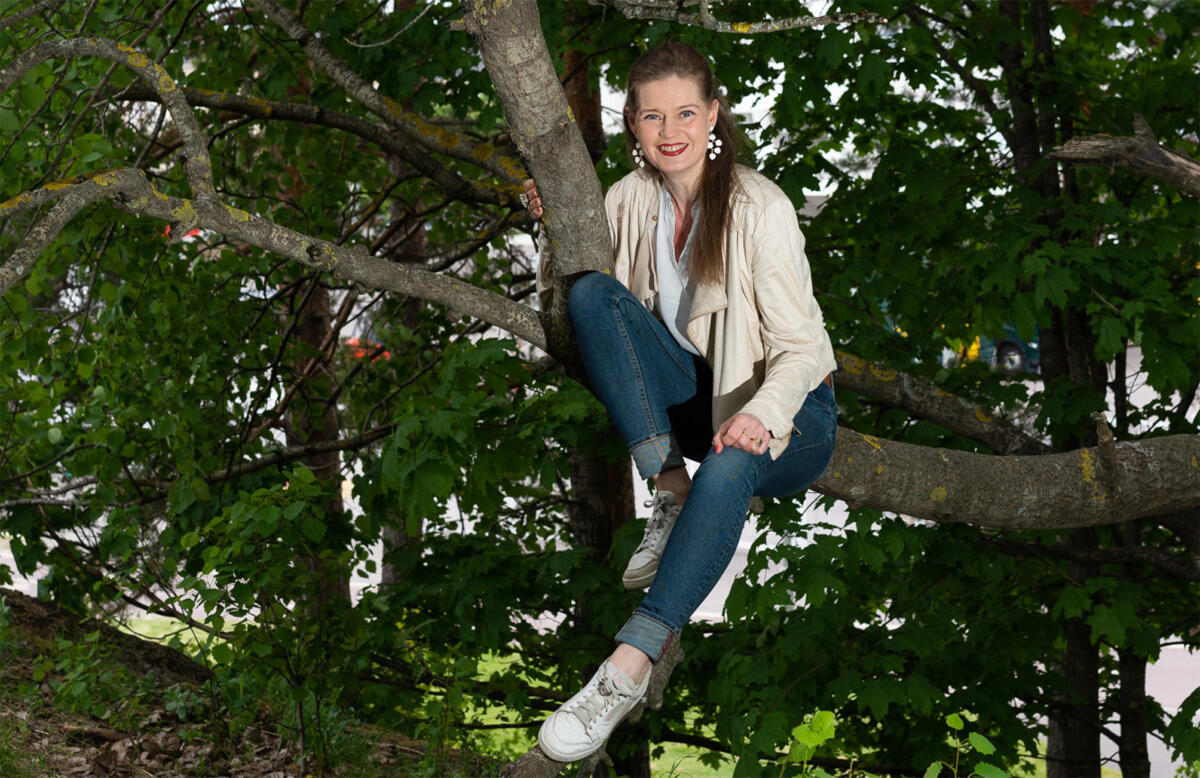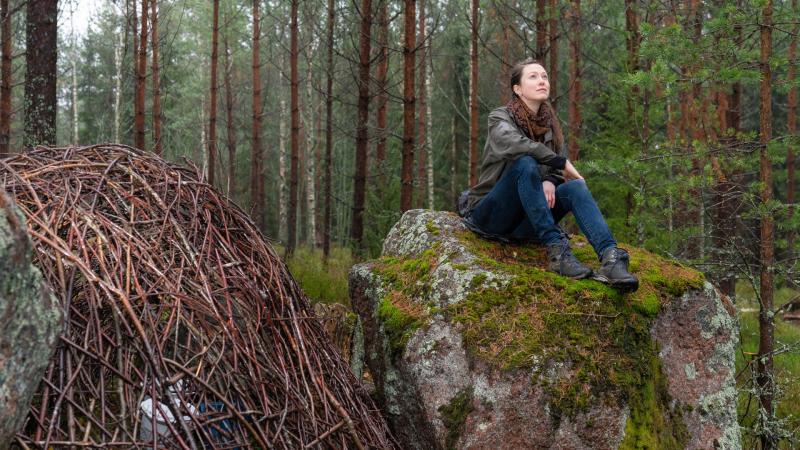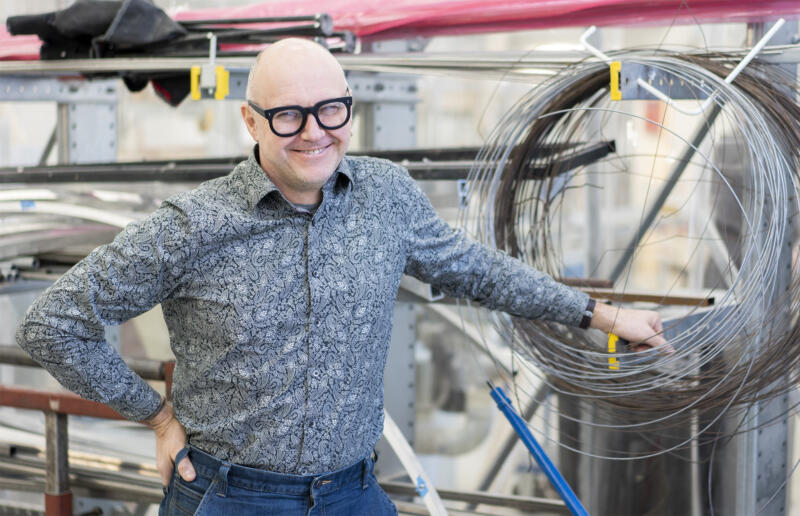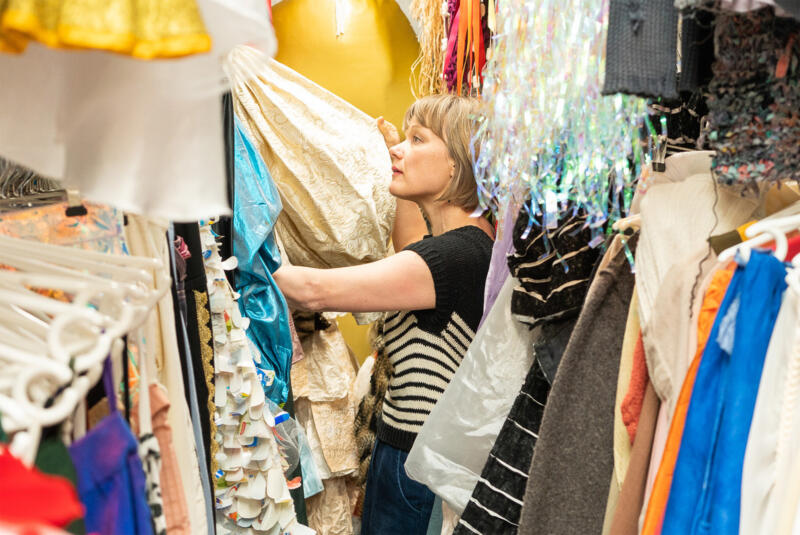Professor of Music Education Heidi Partti: “Hope is crucial in the environmental crisis”
Professor of Music Education Heidi Partti from the Sibelius Academy thinks that art provides important tools for expressing and dealing with feelings in the sustainability crisis. This article is part of a series where we interview Uniarts Helsinki employees and students concerning themes that relate to the university’s environmental programme.

Heidi Partti’s job duties relate to research, teaching, development of the university community and societal interaction.
How have themes, questions or practices of ecological sustainability been visible in your own work now or in the past?
Ecological sustainability issues are ethical questions about how we should live life and how we can promote the common good. When we have this approach, it’s clear that we can’t separate ethical questions from questions of preserving the living conditions of the biosphere. Therefore, ecological sustainability is not a separate issue, and instead, it’s linked to the everyday fundamentals of life and the fate of the entire planet and humanity.
As researchers and teachers, we are faced with various kinds of situations and moments where we have to make a choice, forcing us to solve them using our ethical judgement. For example, we discuss how we can engage in international affairs without polluting the environment with emissions from travelling and explore what kinds of research questions and angles could promote a comprehensive, eco-social and ethical understanding of the world.
I think that all in all, it’s important to consider ecological questions also by asking ourselves what we already do well and how we could expand our existing activities and strengths or how how we could reinforce them with ecological themes. For example, in the work of arts and music educators, we have noticed that we already promote a lot of the skills that are needed also in solving ecological crises: teamwork, listening to others, promoting the common good, using imagination and reinforcing emotional skills.
Why do you think ecological sustainability is important in your own work?
Ignoring ecological thinking is not an option. As people operating in the arts sector, we’re used to thinking about and promoting an all-round good life among human communities, but one challenge that we have is definitely figuring out how we could expand the sphere of our care to non-human creatures and take the entire planet into consideration. This requires a major shift in paradigm, or at least an expansion of it.
What is Uniarts Helsinki’s role in environmental issues or what should it be?
When it comes to all ethical and ecological issues, the responsibility is both collective and individual. Uniarts Helsinki’s role as an organisation is to support, spur and enable practices and operations that aim at reducing the environmental load and solving sustainability crises. Uniarts Helsinki could, for example, have more of a role in enabling and sparking up joint discussions to try to see in what regard we, as an organisation, are part of the problem and what we should stop doing or what we should do differently.
But it’s also worth noting that as people who work and study at Uniarts Helsinki, we can’t hide behind our organisation thinking that somebody else will surely take care of everything. The environmental programme is important, but without the actions and changed practices of individual people, our environmental load will not reduce and our operations won’t change. At the same time, it’s very important that Uniarts Helsinki as an organisation provides support, encouragement and possibilities to make choices and take measures that aren’t always easy. So the matter absolutely cannot rest on the shoulders of individuals, and it would be ideal if the collective responsibility and individual choices worked in seamless unison.
The fourth goal in Uniarts Helsinki’s strategy is that “art is part of the solution to the ecological sustainability crisis”. What does this make you think? If art is or was part of the solution, what kinds of things could that mean in practice?
The power of art and the humanities is in that they can give us tools to reflect on how we can live decently as human beings on this planet. Art probably can’t put a concrete stop to the rise of the average global temperature, but I still think that art has an important place in the equation when we consider ways of tackling the sustainability crisis. Art can help us see past the present moment and imagine different futures that aren’t locked into a specific outcome. On the other hand, art can challenge and act as a counterforce to the kind of anthropocentric, individualistic and consumption-based lifestyle that is largely the reason we have the crises that we currently have.
Art provides tools for expressing and dealing with feelings, and these tools play an important role in the sustainability crisis. Art offers possibilities to deal with non-verbal feelings and to face the world in a bodily and sensory manner. This can help in dealing with feelings of anxiety related to the ecological crisis. I also find that art has a lot of potential in being useful when it comes to building a world view that is based on empathy and care.
All of the aforementioned things connect to hope and preserving that hope. I think that hope is crucial in the environmental crisis so that we can take action and move forward. Art and arts education play a central role in preserving that hope in this crisis-ridden world.
What kind of art has made an impact on you? And how?
A book called Margarita by Anni Kytömäki has made a big impact on me on an emotional level and acted as a signpost towards reflections on biodiversity and my relationship with the forest. The book is a really good example of how fiction and art can steer us towards important directions without spewing facts or telling us what to think. Inspired by this book, I started studying and searching for more information about questions related to biodiversity and forests, especially. I’m eternally grateful for this, and I found the book very beautiful and touching.
What is the most essential thing about Uniarts Helsinki’s environmental programme for you?
It’s really important that we now have an environmental programme that covers the central operations of Uniarts Helsinki, including hands-on practices related to teaching, research and artistic activities, but also more structural issues. I myself have contributed to the process and I’m glad that we have been able to examine issues from various different perspectives. Things appear differently to people in different roles.
But for me, the most central question is what happens next. The document itself doesn’t do anything if we fail to integrate its content into daily practices. I hope that we can engage in even more discussions within our community and talk about practical measures and also about values, goals and the meaning of quality in our activities, among other things. These discussions will then lead to more sustainable practices.


